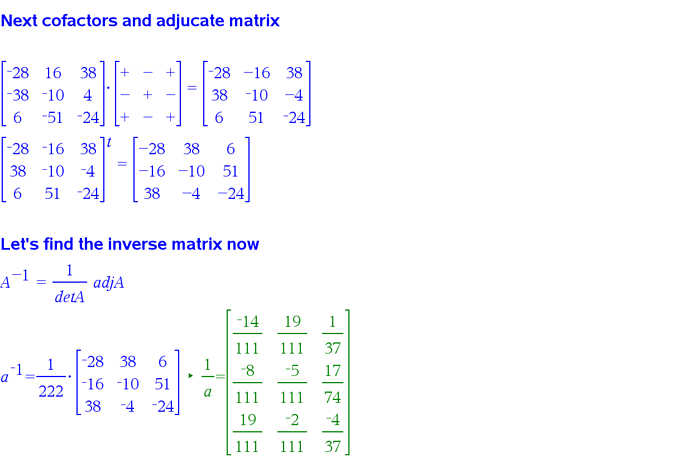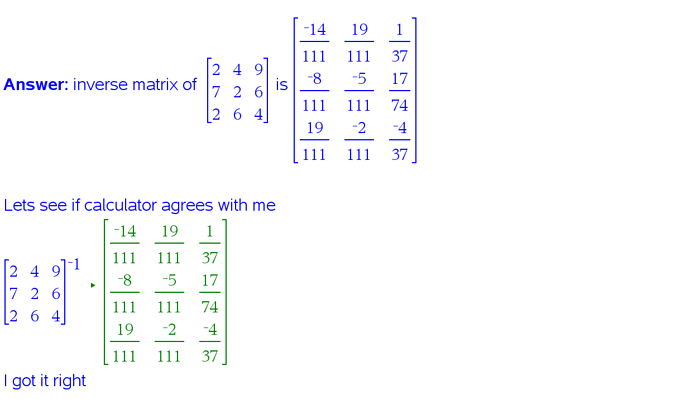Great work @Mikapo!
I agree that it is quite a long and laborious task to complete by hand, but it definitely gives you a deeper appreciation for the relationship between a matrix and its inverse.
You can use it for all sorts of calculations. Any calculation that involves multiplying two matrices can be “undone” with the matrix inverse.
In practice, matrixes are used heavily in graphics processing, so if you ever start messing about with more complex graphical or compute shaders then you’ll almost certainly run into them.
They’re used heavily for the things like object transformation, rotation and scaling but luckily game engines do a good job at shielding us from a lot of the complexity.
As a simple example, one way to change the direction of rotation would be to multiply your vector by the inverse rotation matrix.



